Studies have shown that students physically involved with learning score higher on subsequent exams–and we’re not just talking about the toddler, preschooler, kindergartner set. The effects are demonstrable even at the college and graduate level.
Research into cognitive development strongly suggests that this sort of physical stimulation during learning builds a deeper understanding of academic skills. Children in need of speech therapy may especially benefit from speech activities using tactile sensations.
Plus…it is just plain fun to get your hands dirty and mess around!
Materials:
- non-toxic washable paints
- foam shaving cream
- cookie sheet or baking pan
- thick paper (we used watercolor paper)
Directions:
1. Spray some shaving cream on the cookie sheet (or in the baking pan).
2. Add some squirts of paint.
3. Swirl around the paint and shaving cream. Have fun, make shapes, letters, or anything you wish. (Remember that when you make your print, you will have a mirror image. So, most letters would appear backward on the print if written the correct way in the pan.)
4. Gently place a piece of paper on top of the painting and carefully lift off. You should have a marbleized design.
5. Repeat!
Some of the younger children were a little unsure of the sensation. In general, I don’t push these things but continue to offer opportunities.
My son, who is 2.5, had a ball making his creations, washing his hands in a bucket of water, then returning to make another.
My daughter, age 4.5, was especially interested in making shapes and seeing how the paint transferred to the paper.
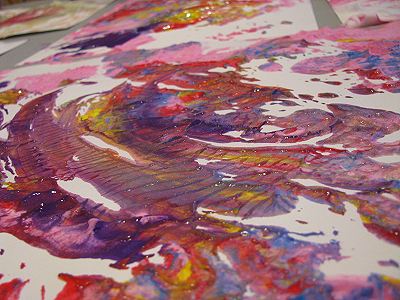
Shared at: New For Us Friday
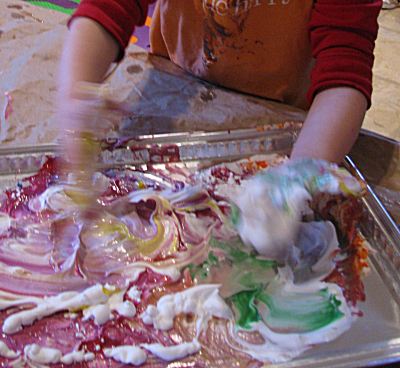
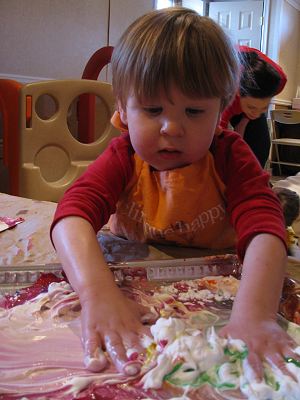
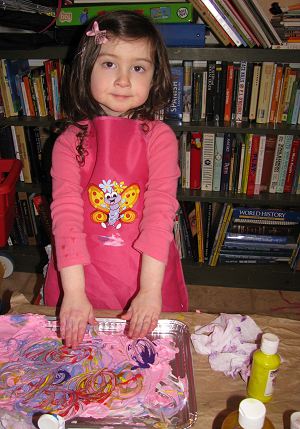
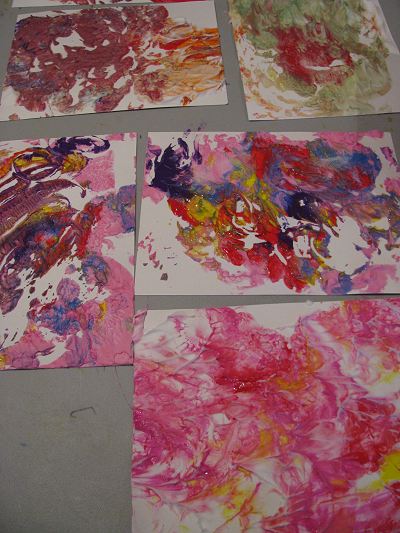
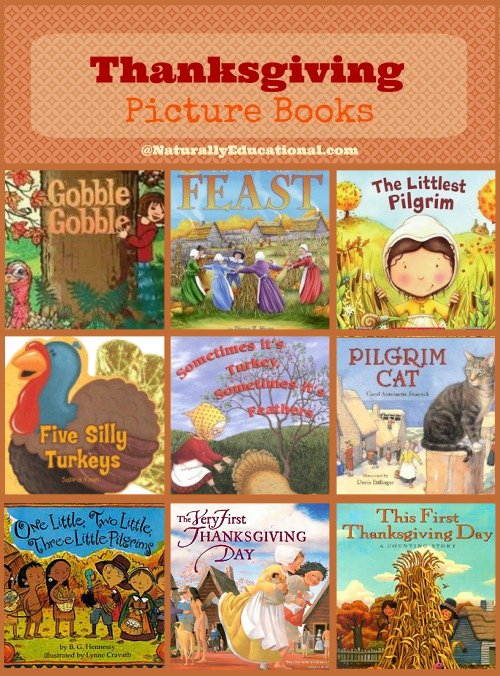
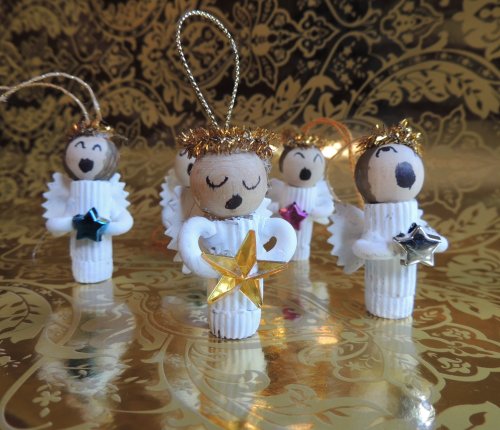
Candace!! I LOVE this and will definitely bookmark this to use with the kids. I’ve always wanted to try it–and you make it look easy and totally fun. Thanks!!
I shared this post on Facebook.
Love it! I’ve got a post scheduled for Wed about playing with sprinkles and snow…and working on language at the same time. Totally agree that it’s all about experiential learning. 🙂
This looks like so much fun!